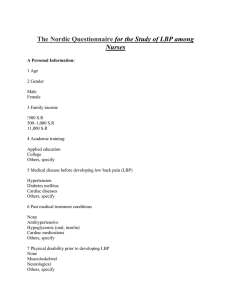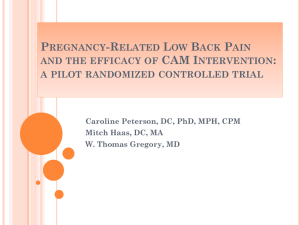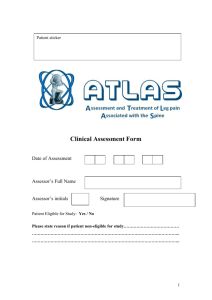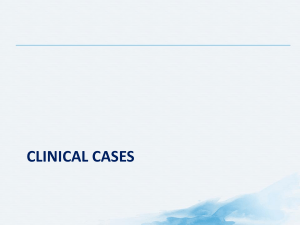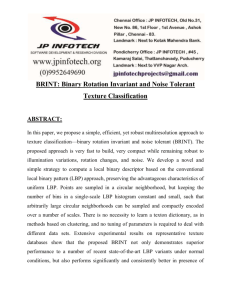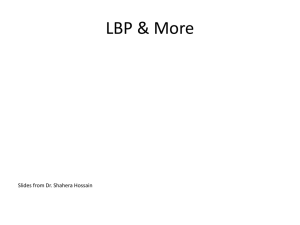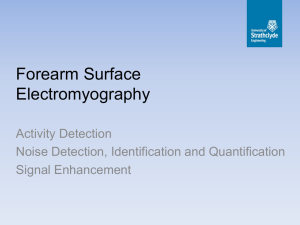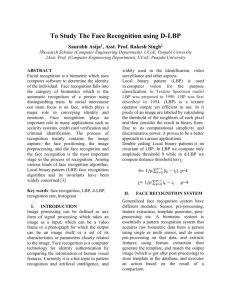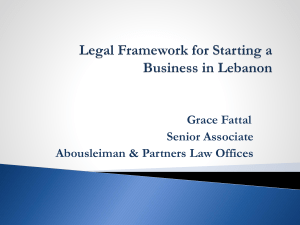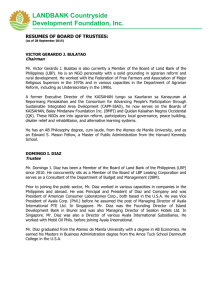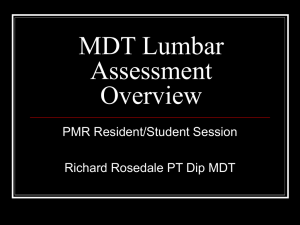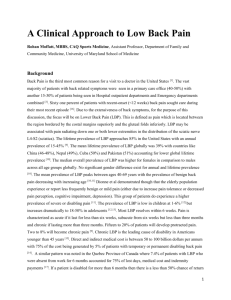The Bane of Back Pain
advertisement
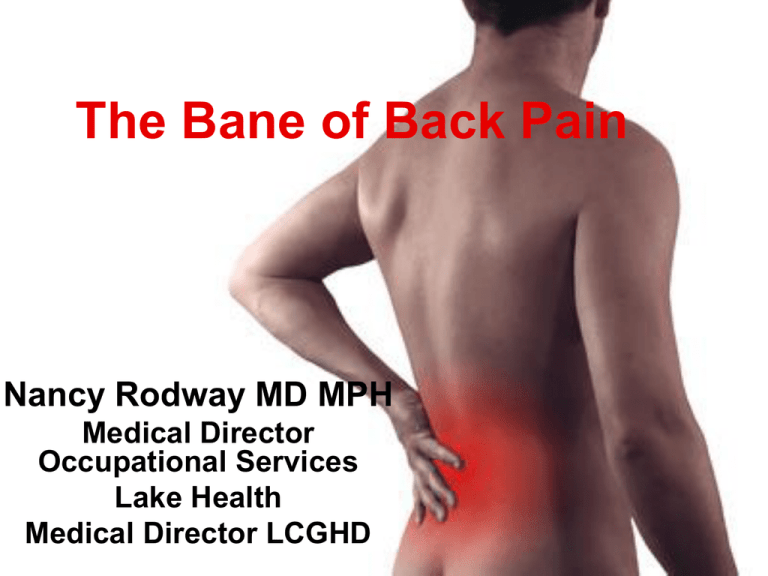
The Bane of Back Pain Nancy Rodway MD MPH Medical Director Occupational Services Lake Health Medical Director LCGHD Objectives • • • • • • • Describe the scope of the problem Anatomy 101 Understand the anatomy of back pain Can anything prevent back pain? How to treat back pain? Can anything predict back problems? Recommendations for employers Back Pain Basics • 60-80% of adults will experience LBP • LBP = more days off work than any occupational injury • LBP = 10-33% of BWC costs • 90% of LBP resolves within 90 days even without any treatment • Often no clear-cut cause for pain Anatomy 101 Disc disease • Common by age 40 • 80% of 60 year olds have bulging discs WARNING! • • • • Cancer Fever Incontinence Pain not relieved by rest Metastatic Cancer Epidural Abscess Abdominal Aortic Aneurysm Occupational Back Pain Evaluation of OTJ Back Injuries Waddell Signs • Tenderness tests: superficial and diffuse tenderness • Simulation tests: axial loading • Distraction tests • Weakness or sensory changes which aren’t anatomically logical • Overreaction Need 3 Evaluation Continued “Symptom Magnification” “Non-physiologic Symptoms” None for six weeks Treatment for Acute LBP • Heat • OTC analgesics • Manipulation • • • • Aerobic activity Harpagoside Massage Fear avoidance behavior testing and training Clinical Prediction Rule Fear Avoidance Behavior Fear Avoidance Training Harpagoside DO NOT TAKE WITH BLOOD THINNERS What doesn’t work in acute LBP • • • • • Antidepressants Routine use of opiates Dietary supplements Lumbar supports Mechanical massagers What doesn’t work in acute LBP • • • • • Traction Myofascial release Acupunture Stretching Prolotherapy NO BED REST!!!! What works for chronic LBP • • • • • • • • Heat Massage and acupuncture for short term TENS units Aerobic exercise and strengthening Yoga Trigger point injections Cognitive behavioral therapy Back school What works for chronic LBP • • • • • • • OTC analgesics Opiate trial IF function improves Harpagoside Alteration of sleep posture (NOT mattress) Neuroreflexotherapy Shoe insoles Heel lift if leg length difference Sleep Neuroreflexotherapy What doesn’t work for CBP • Regular or routine manipulation • Strengthening abdominal muscles • Spinal injections if no leg pain (epidural or facet) • Prolotherapy What doesn’t work for CBP • • • • Surgical lumbar fusion Artificial disc replacement Spinal cord stimulators Discectomy—surgically trimming the bulging disc Does surgery help? • Simple lumbar discectomy for leg pain x 4-6 weeks • Decompression surgery for spinal stenosis • Fusion for spondylolisthesis SURGERY TREATS LEG PAIN/WEAKNESS Medicalization of Back Pain • Patients need reassurance that most back pain is benign and 90% resolve without treatment • Getting a specific DIAGNOSIS suggests there is a CURE leading to: – Failed expectations – “I just want them to fix me.” – Problem with BWC • Abnormal findings on Xray and MRI are normal by age 40 and 80% of adults have abnormal Xray/MRI by age 60 CURE often not possible Focus on return to prior function Limit focus on PAIN in recovery Back pain prevention What works • • • • • Core strengthening Proper lifting technique Ergonomic stations Engineering controls Smoking cessation and weight loss Back pain prevention What does not work • Back Class/School • Back Brace • Stretching Screening tests for back injuries Can you avoid hiring workers who will be injured? Xrays of the lumbar spine do not predict occupational back injuries and may harm the worker Predictive of LBP • • • • Physical exams don’t predict LBP Lift tests predict only the weakest worker A history of back problems predicts LBP Family history of LBP predicts LBP – GINA law means you cannot ask family history • Job Performance Assessment Job Performance Assessments Recommendations • Prioritize ergonomics and engineering controls to prevent back injuries • Consider on-site manipulation • Consider JPAs • Maintain a healthy workforce • Do not hire smokers or encourage smoking cessation • Assess fear avoidance behaviors and be aggressive with claim management if high American College of Occupational and Environmental Medicine Practice Guidelines The End
